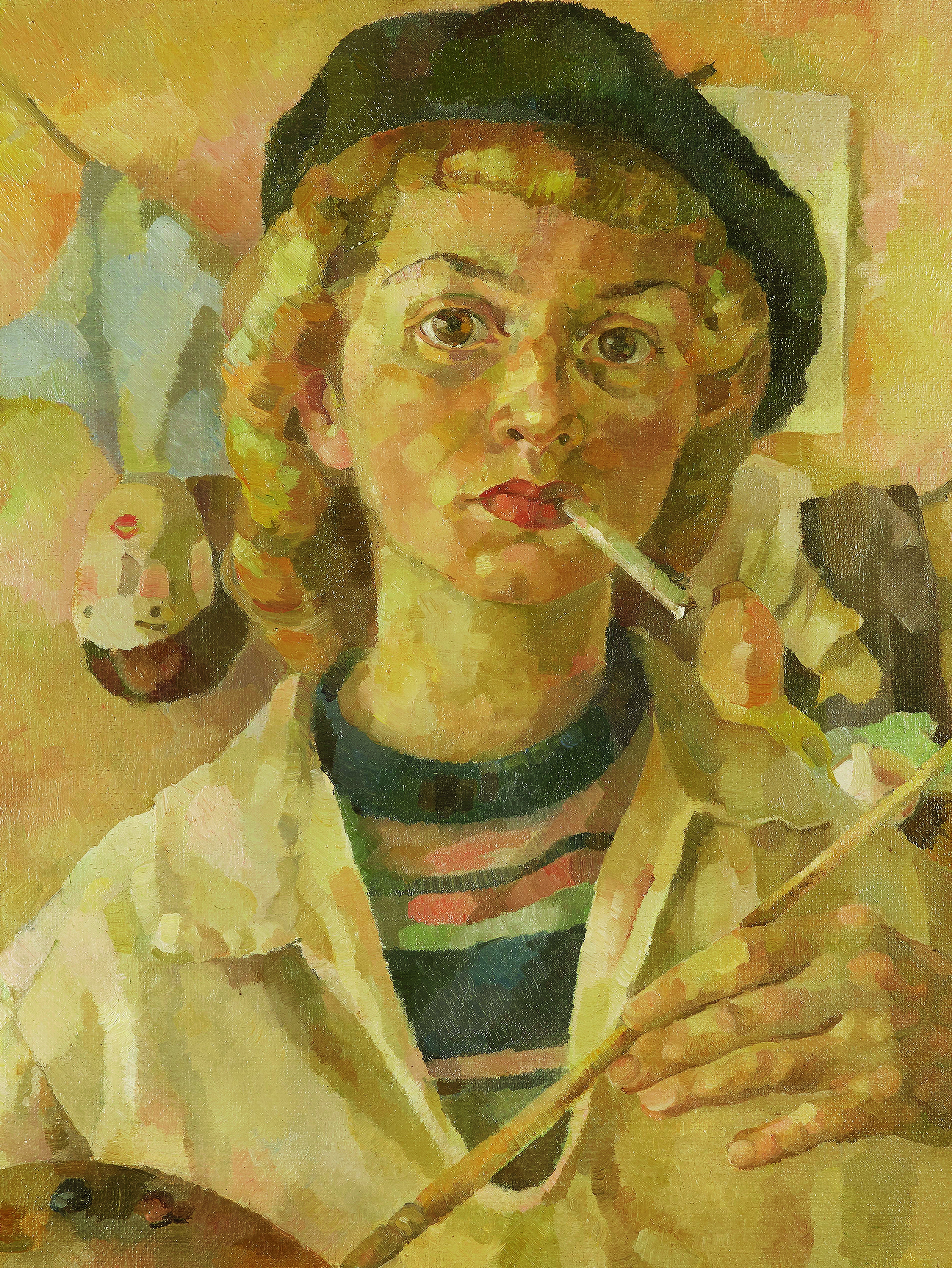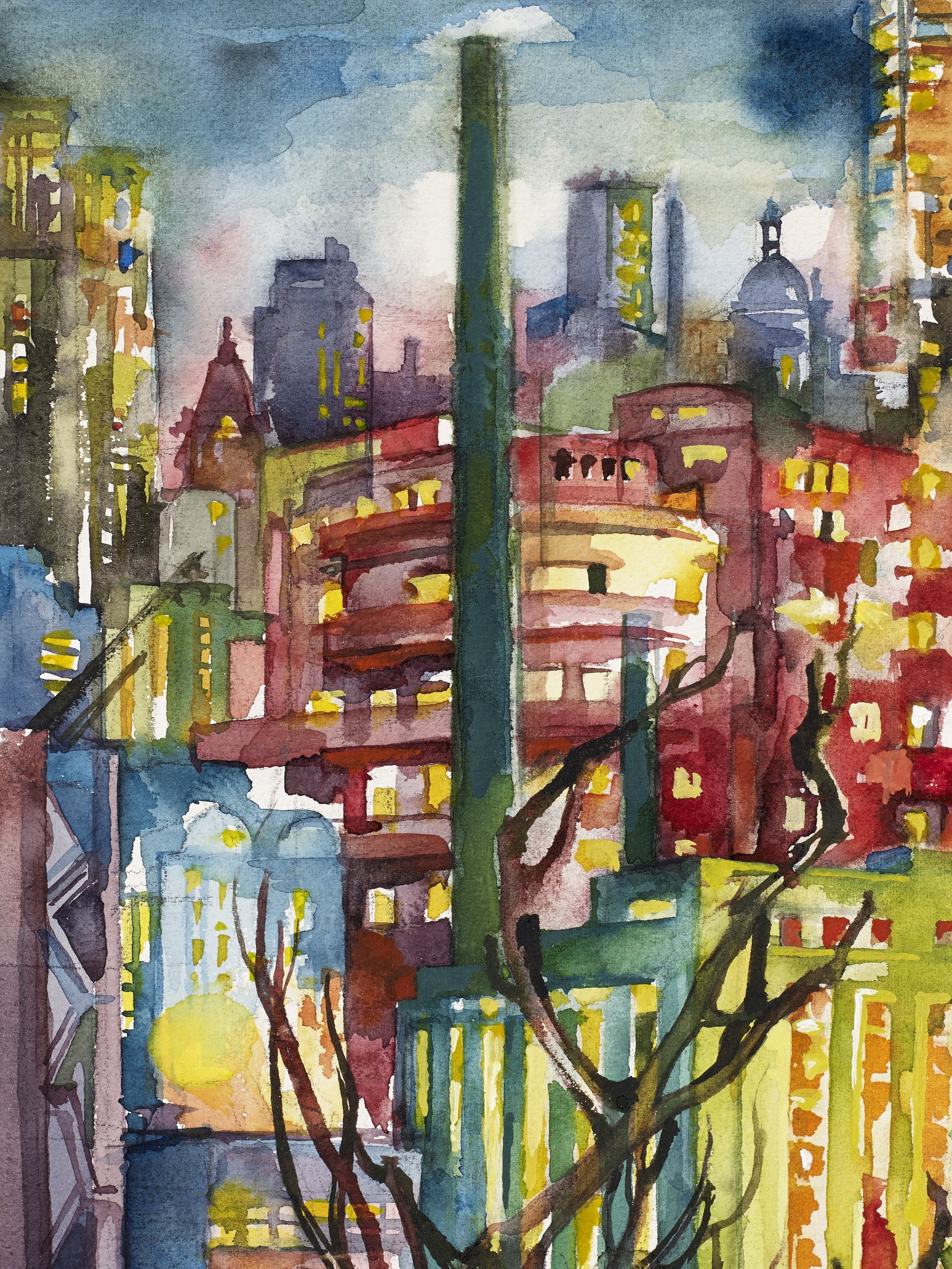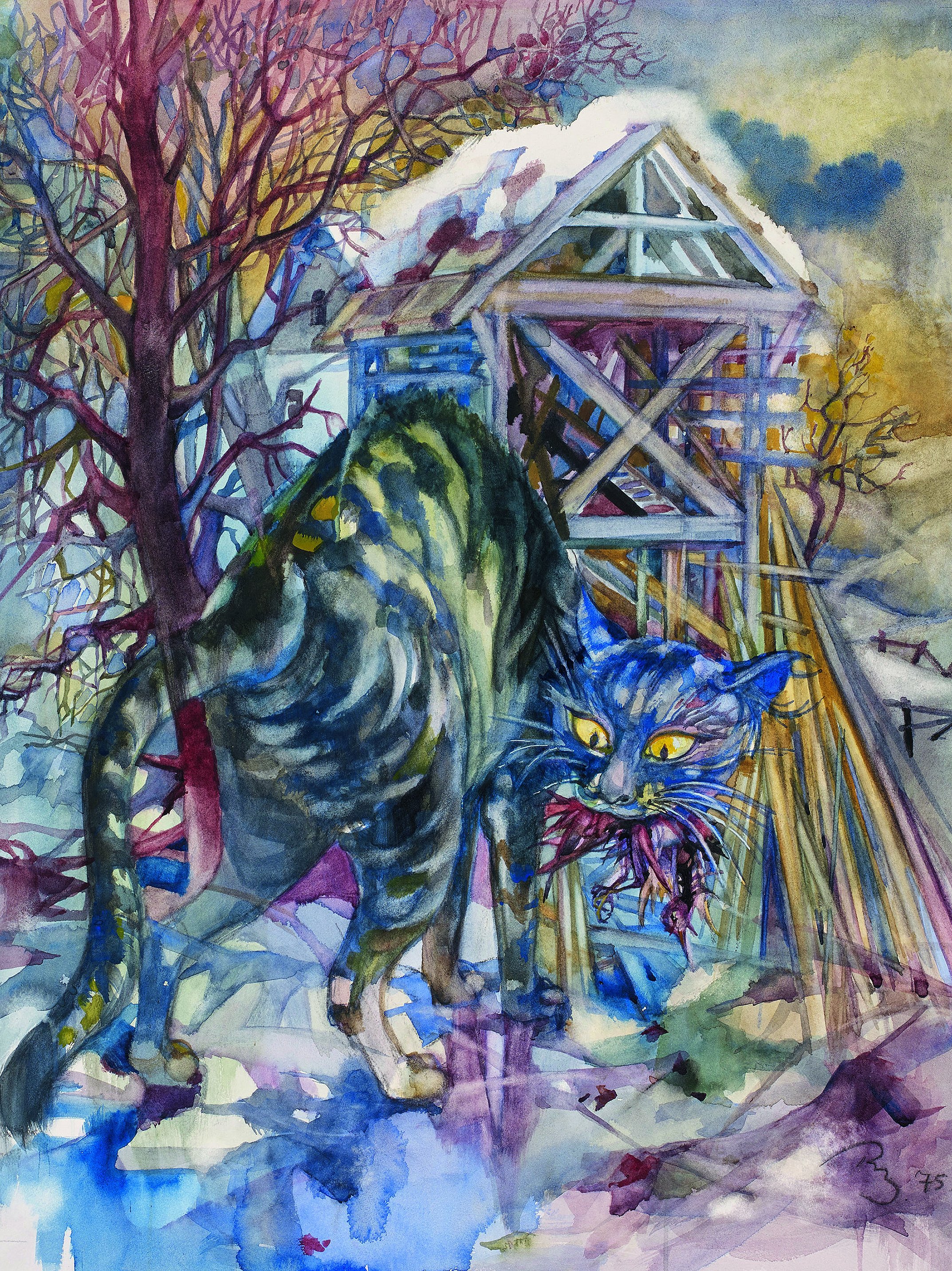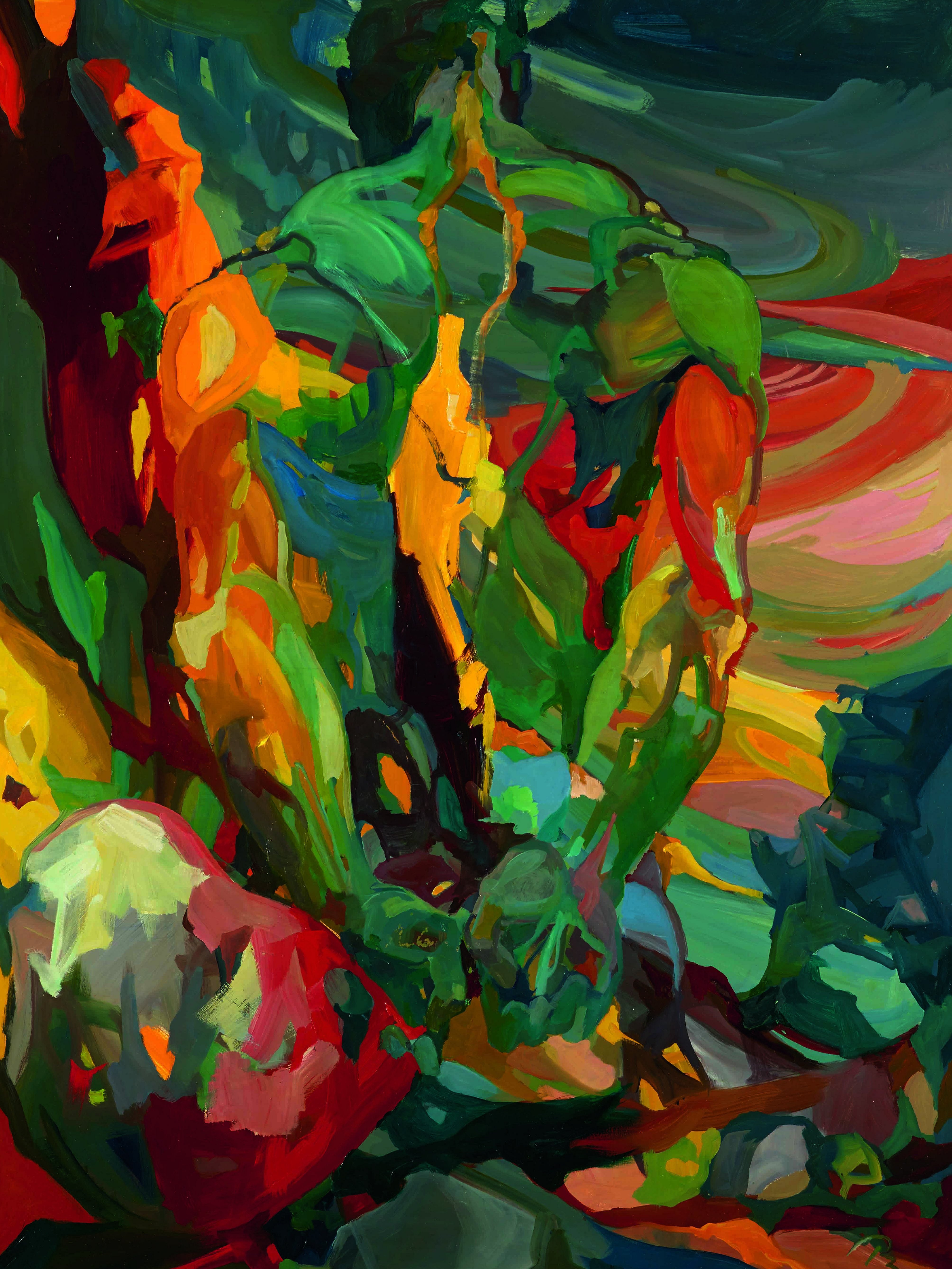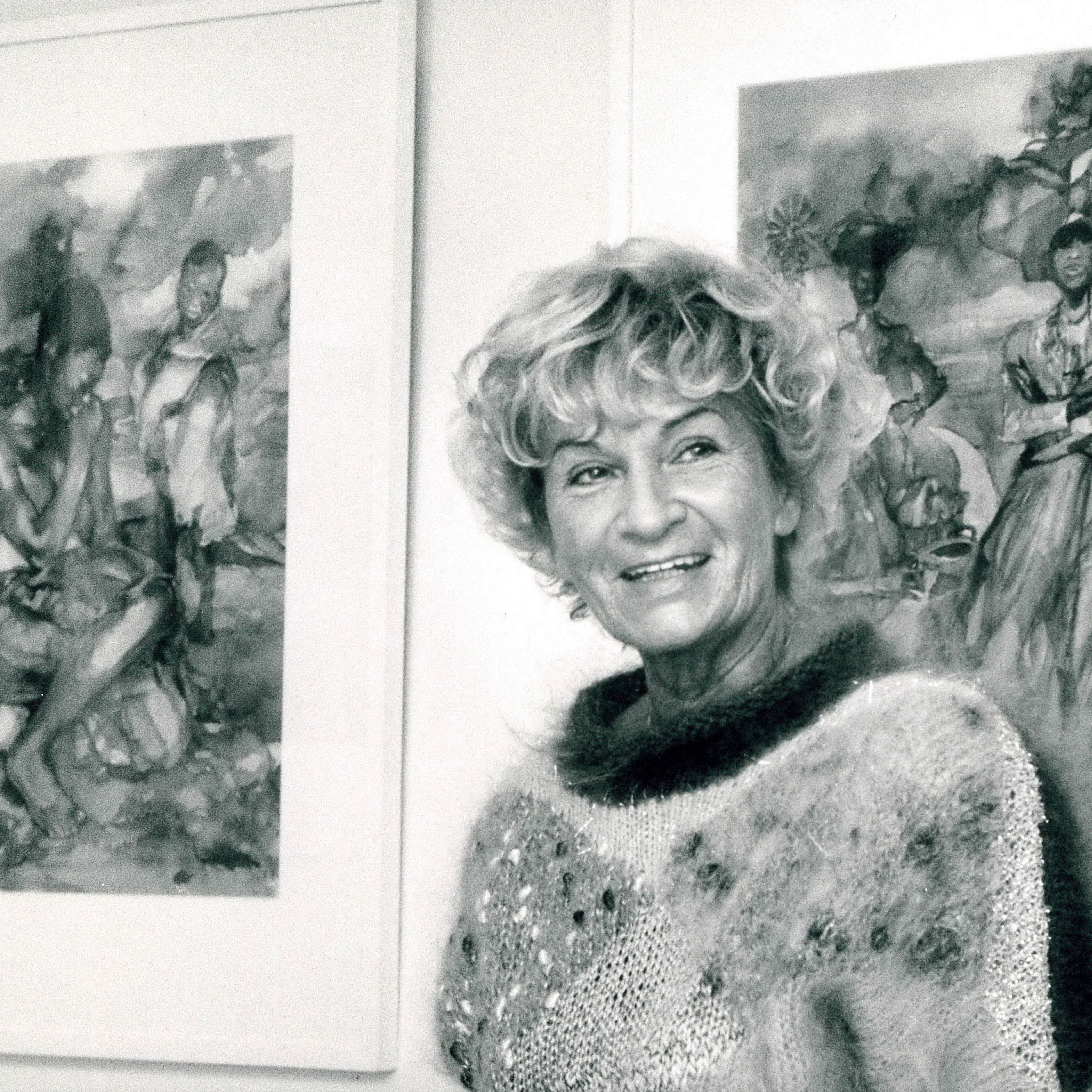
Ruth Baumgarte
As a representational artist, Ruth Baumgarte (1923-2013) is oriented towards reality. But in her œuvre she turns to the inner experience in ever new formulations. In this point she follows the German Romanticism, to look as an observer at a world and to watch the longings and hopes for an ideal world fail.
Africa, the enigmatic continent with its power, but also its great social and political changes, becomes the impulse of her brilliant color-saturated work, which has received great international attention.

Art Foundation
The Ruth Baumgarte Art Foundation was established by the artist in 2012 as a non-profit foundation.
It's goal is to scientifically research the extensive oeuvre of the German painter, draftswoman and graphic artist and to communicate it to the general public through exhibitions, events and publications. In addition to watercolors and drawings, Baumgarte's oeuvre also includes a large number of illustrations. In January 2023 the Catalogue Raisonné Ruth Baumgarte was published by the Hirmer publishing house Munich. In addition, museum exhibitions in Germany and abroad are being prepared. Every year, the Art Foundation awards the well-funded Ruth Baumgarte Art Award to an artist working in the field of representational art.
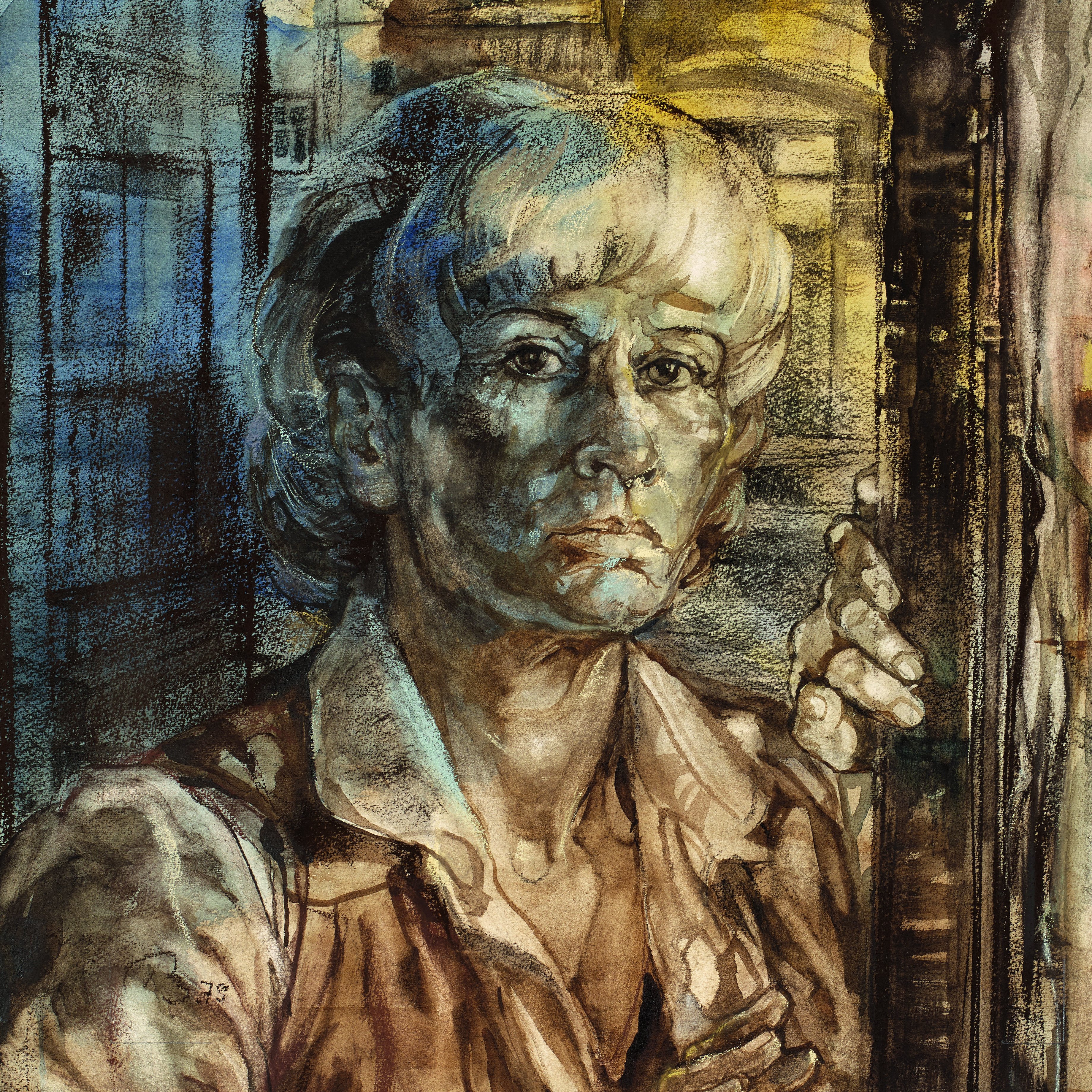
Topics
Ruth Baumgartes work is characterized by eight central topics.
Her precise powers of observation and extraordinary talent as a draftswoman characterize her early works during the Second World War. Since some motifs did not conform to the common art canon around 1940, works such as those about persecuted Sinti and Roma or the boys and old men conscripted into the Volkssturm had to remain hidden. Already during her time at the academy, she discovered colorism and color as a driving force for her work. Throughout her life, she was interested in man in his working world and its social reality. She also successively addresses the different roles of women in the 20th century, whereby artistic work and personal biography are closely interwoven. Starting in the 1980s, she began several series of paintings on environmental and social themes and devoted herself to her Africa cycle, with which she experienced her international breakthrough as an artist. Her estate also includes several hundred paintings that identify her as a traveling artist from the early 1950s to the early 2000s.

